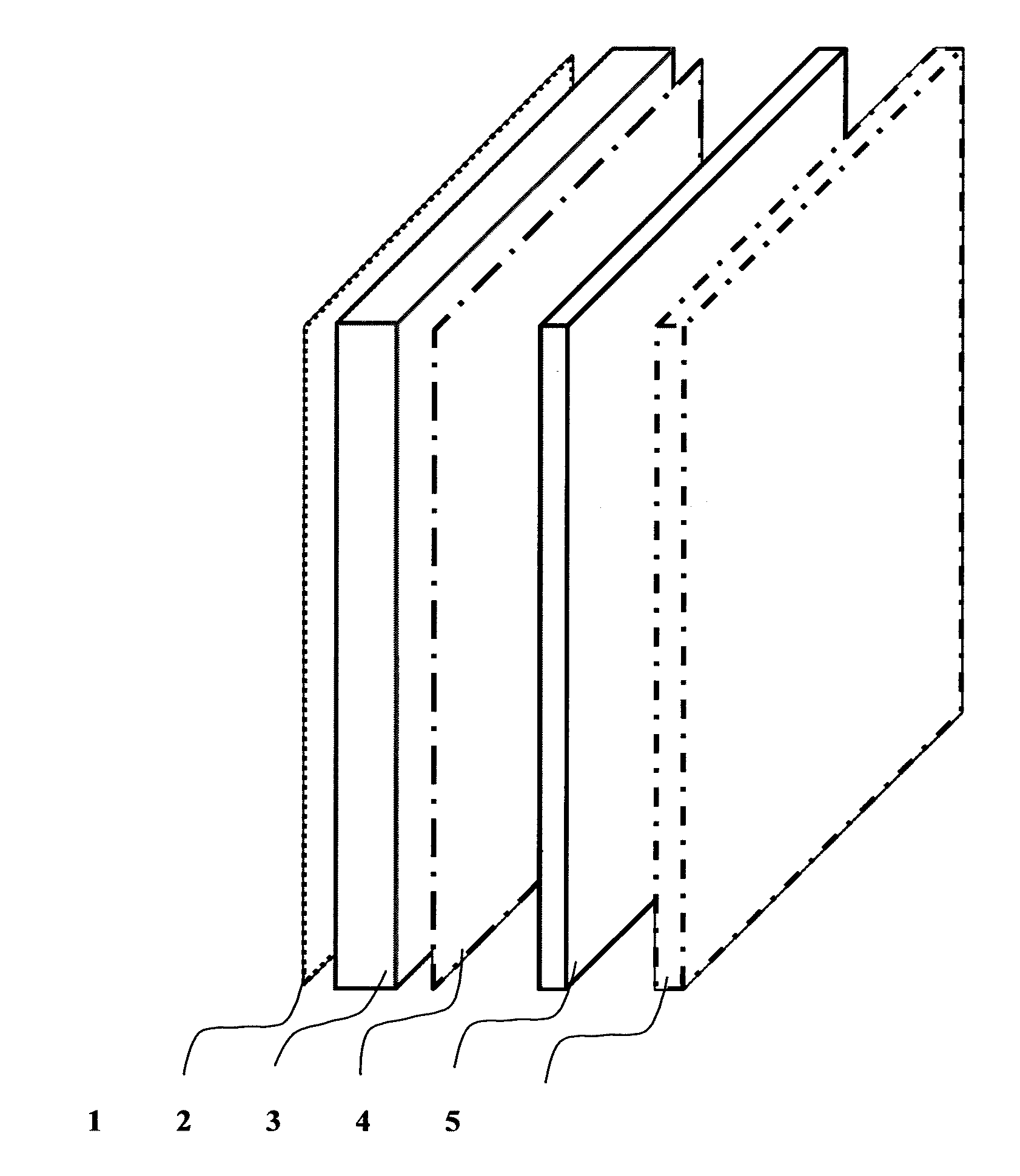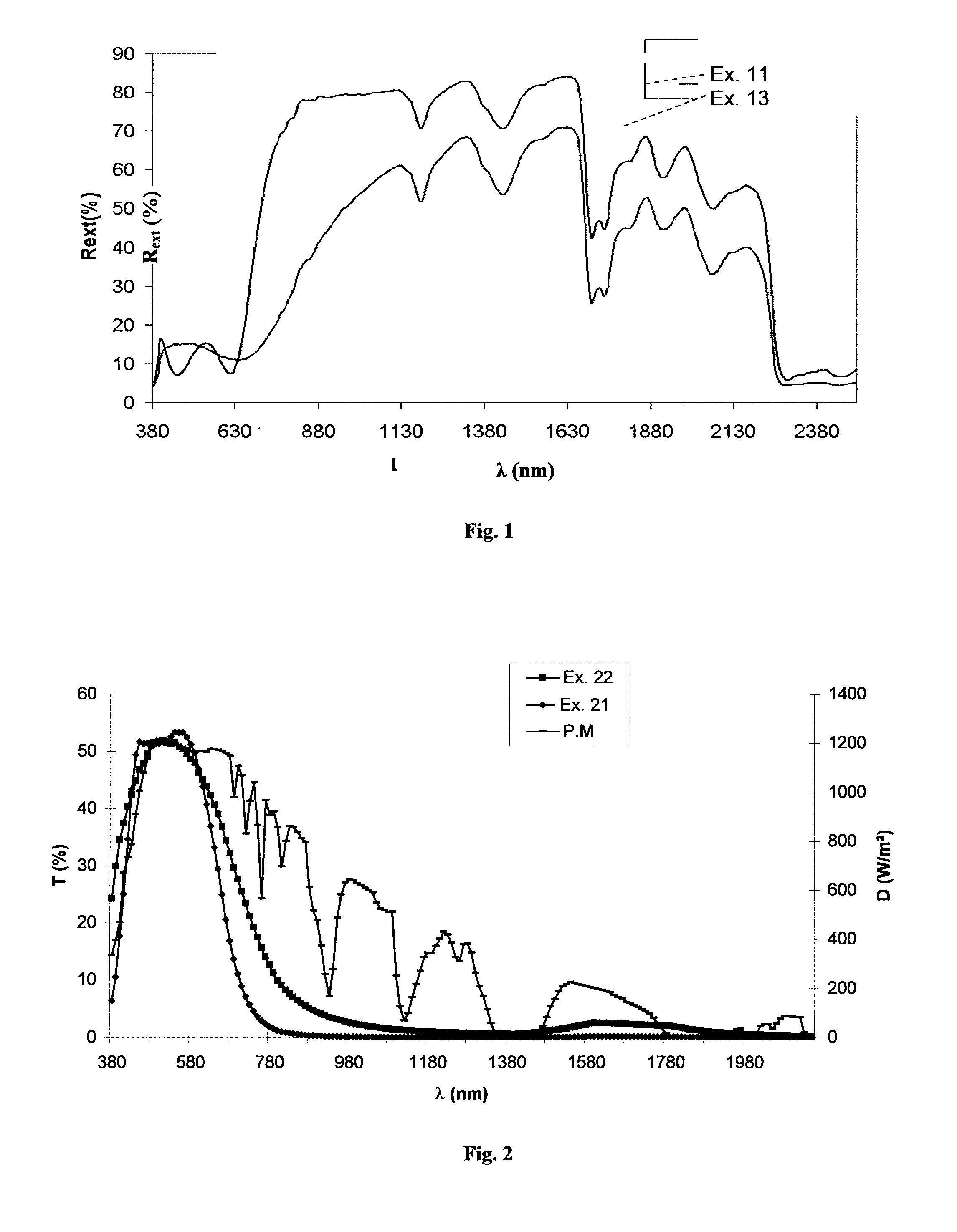Transparent substrate which can be used alternatively or cumulatively, for thermal control, for electromagnetic armour and for heated glazing
a transparent substrate and thermal control technology, applied in the field of glazing, can solve the problems of stack not being able to achieve true effective electromagnetic shielding, stack resistivity not being able to achieve much less than 1.8, and stack not being able to achieve resistance per squar
- Summary
- Abstract
- Description
- Claims
- Application Information
AI Technical Summary
Benefits of technology
Problems solved by technology
Method used
Image
Examples
example 11
According to the Invention, Three-Layer
[0103]
LayerSi3N4ZnOAg1ZnOSi3N4ZnOAg2ZnOSi3N4ZnOAg3ZnOSi3N4Thick-37712.5849712.5853712.5829ness(nm)
outside / glass (2.1 mm) / PVB (0.76 mm) / Ag3 / Ag2 / Ag1 / glass (1.6 mm) / inside
example 12
According to the Invention, Three-Layer
[0104]Same stack as in Example 11 but also with a titanium overblocker on top of each functional layer (thickness around 0.5 nm to 1 nm).
example 13
Two-Layer Comparative Example
[0105]
LayerSi3N4ZnOAg1ZnOSi3N4ZnOAg2ZnOSi3N4Thick-248867087626ness(nm)
outside / glass (2.1 mm) / PVB (0.76 mm) / Ag3 / Ag2 / Ag1 / glass (1.6 mm) / inside with, in addition, a titanium underblocker beneath each functional layer (thickness around 0.5 nm to 1 nm)
PUM
| Property | Measurement | Unit |
|---|---|---|
| total thickness | aaaaa | aaaaa |
| total thickness | aaaaa | aaaaa |
| total thickness | aaaaa | aaaaa |
Abstract
Description
Claims
Application Information
 Login to View More
Login to View More - R&D
- Intellectual Property
- Life Sciences
- Materials
- Tech Scout
- Unparalleled Data Quality
- Higher Quality Content
- 60% Fewer Hallucinations
Browse by: Latest US Patents, China's latest patents, Technical Efficacy Thesaurus, Application Domain, Technology Topic, Popular Technical Reports.
© 2025 PatSnap. All rights reserved.Legal|Privacy policy|Modern Slavery Act Transparency Statement|Sitemap|About US| Contact US: help@patsnap.com



